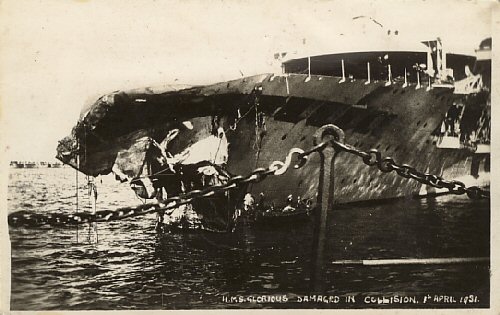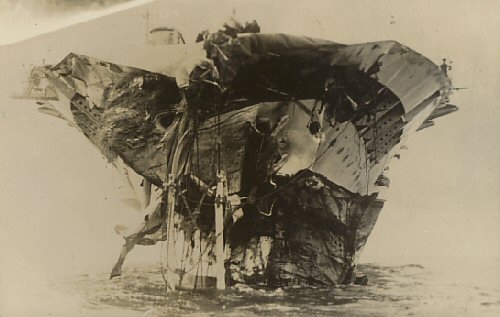
Originally commissioned as a light cruiser with four 15-inch guns, HMS Glorious was converted to an aircraft carrier between 1924 and 1930. Stationed first in the Mediterranean and then with the Home Fleet during World War II, she made five patrols to Norway during and after the German invasion in April 1940.
In early June she aided in the evacuation of northern Norway, sailing from Scapa Flow to carry RAF Hurricanes and Gladiators to Britain; it was one of the first times that high-performance monoplane fighters ever landed on an aircraft carrier, without arrester hooks. At about 0300 on June 8, she sailed for Scapa Flow with the destroyers HMS Acasta (Commander Charles Glasfurd) and Ardent (Lieutenant Commander J. F. Barker). At about 1600 that afternoon, the German battlecruisers Scharnhorst and Gneisenau appeared on the horizon. At 1632, Scharnhorst opened fire at 28,600 yards, and scored a hit on Glorious's flight deck with her third salvo; 24 minutes later another shell killed Captain Guy D'Oyly-Hughes and many on the bridge. A smoke screen forced a lull in the fighting between 1658 and 1720, when Glorious was hit again in the engine room. She sank half an hour later (in 68°38N, 4°11E), with the loss of all but 37 of her crew. Ardent had sunk at 1725 (68°56N, 3°51E), and Acasta went down at 1820 (68°40N, 4°19E), though not before she landed a torpedo under Scharnhorst's main after turret. There was only one survivor from each of the destroyers.
